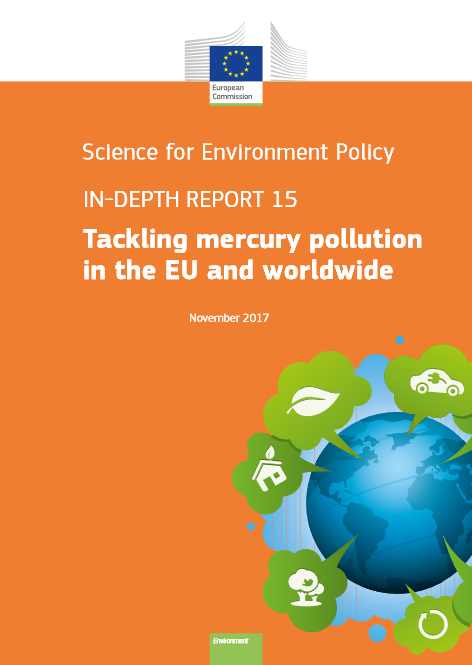Publications

"We Fight to Protect Our Home:” Reprisals Against Environmental Defenders in Loei Province, Thailand
A report by Fortify Rights, October 2018
This report reveals that Thai authorities and Tungkum Ltd. committed and contributed to serious human rights violations and abuses against members of KRBKG and environmental defenders in Wang Sa Phung District, Loei Province. Violations and abuses include the arbitrary detention of human rights defenders and violations of the rights to freedom of expression, peaceful assembly, a healthy environment.
Local residents in affected communities surrounding the gold mine largely rely on farming and the natural environment for their livelihoods and sustenance. Water and soil pollution has adversely impacted their daily lives and livelihoods. Residents have also complained about health conditions...

PCDD/Fs and PCBs in eggs – data from China, Kazakhstan and Thailand
Authors: Petrlik J1,2, Teebthaisong A3, Bell L2,4, Behnisch PA5, Da M6, Saetang P3, Ritthichat A3, Kalmykov D7 | August 2018
Organizations: Arnika, IPEN, Ecological Alert and Recovery – Thailand (EARTH), National Toxics Network, BioDetection Systems BV (BDS), Nature University, Beijing, China, and Karaganda Regional Ecological Museum, Kazakhstan
There is a range of studies on PCDD/Fs and PCBs in eggs1-7. Eggs have been found to be sensitive indicators of PCDD/F and PCB contamination in soils and are an important exposure...

POPs contamination at ‘recycling’ and metallurgical site in Thailand
Authors: Teebthaisong A, Petrlik J, Ritthichat A, Saetang P, Strakova J | August 2018
Organizations: Ecological Alert and Recovery – Thailand (EARTH), IPEN, and Arnika – Toxics and Waste Programme
This study evaluates the results of the analyses for Persistent Organic Pollutants (POPs) in the free-range chicken eggs in a vicinity of the artisanal recycling workshops in Samut Sakhon, a neighbouring province of Bangkok, Thailand. Free-range chicken eggs were used for monitoring levels of POPs contamination at certain places in many previous studies1-7. Eggs have been found to be sensitive indicators of POPs contamination in soils or dust and are an important exposure pathway from soil

Toxic Impressions: BPA in thermal paper
A report by Toxics Link, 2017
Thermal papers are widely used to print the sale receipts in various sectors like grocery stores, gas stations and bank ATMs to ensure fast and accurate services. This paper is also used by the ticketing agencies, lottery systems and other businesses, which require accurate and high volume printouts.
In this study, twelve unused thermal paper samples from both known and local brands of different manufacturers and suppliers were randomly collected from different markets in New Delhi. We found BPA in concentration between 300 ppm and 6600 ppm in thermal papers with the average levels of 3037 ppm, which is exceedingly high and can have serious adverse impacts on human health and environment.

Chicken eggs as an indicator of POPs pollution in Thailand
Author: RNDr. Jindrich Petrlik
Supporting data: Akarapon Teebthaisong, Atthaporn Ritthichat
Bangkok, Prague, November 2017
In this study, we present the results of monitoring free-range chicken eggs from selected sites in Thailand which are contaminated by persistent organic pollutants (POPs). Free-range chicken eggs were used for monitoring levels of contamination by POPs in various locations in many previous studies. Eggs have been found to be sensitive indicators of POP contamination in soils or dust and are a significant exposure pathway from soil pollution to humans.

POPs at four Thai pollution hot-spots: Map Ta Phut, Samut Sakhon, Tha Tum, and Khon Kaen
Author: Václav Mach, PhD.
Supporting data: RNDr. Jindřich Petrlík, Akarapon Teebthaisong, Autthaporn Ritthichat
Arnika – Toxics and Waste Programme, and Ecological Alert and Recovery - Thailand (EARTH), November 2017
Persistent organic pollutants (POPs) are toxic chemicals that persist over long periods of time in the environment. This study is focused on the presentation of data related to contamination by POPs in 4 hotspot areas in Thailand: The Map Ta Phut industrial complex, the Samut Sakhon hotspot area, the Tha Tum industrial complex, and the Pulp and Paper industrial area near Khon Kaen.

How mercury can enter our bodies
Downlaod infographic at http://ec.europa.eu/environment/integration/research/newsalert/multimedia/infographics/how_mercury_can_enter_our_bodies_standalone_infographic_en.pdf
For more information on mercury, read the Science for Environment Policy In-Depth Report, Tackling mercury pollution in the EU and worldwide at http://ec.europa.eu/environment/integration/research/newsalert/pdf/tackling_mercury_pollution_EU_and_worldwide_IR15_en.pdf

Tackling mercury pollution in the EU and worldwide
Science for Environment Policy, In-depth report 15, written and edited by the Science Communication Unit, University of the West of England (UWE), November 2017
This In-Depth Report from Science for Environment Policy summarises the latest scientific studies and research results on mercury pollution in the global environment. Of the many aspects of mercury pollution, five main topics are addressed: Mercury sources and impacts; Mercury cycling: movement and deposition; Monitoring and modelling approaches; Reduction, treatment and storage; and The Minamata Convention on Mercury and the EU mercury policy.

The impact of heavy metals from toxic hotspots in Thailand on inhabitants and the environment
Authors: Vaclav Mach, Marek Sir, Akarapon Teebthaisong
Supporting data: Martin Bystriansky, Jindrich Petrlik, Autthaporn Ritthichat, Penchom Saetang, Jitka Strakova
By Arnika – Toxics and Waste Programme and Ecological Alert and Recovery - Thailand (EARTH) | 2017
This study is focused on the presentation and discussion of the data related to contamination of soils and sediments by heavy metals. Environmental samples were obtained during a sampling campaign conducted in Thailand in February 2016.

Mercury in fish from industrial sites in Thailand
By Jana Tremlova | September 2017
Arnika Association, Czech Republic and Ecological Alert and Recovery – Thailand (EARTH)
This study is to interpret a data set obtained from an environmental sampling in different parts of Thailand that was carried out in February/March 2016 and February 2017. Samples originated from various sites which some of them served as control areas without any known sources of pollution and some samples originated from highly industrialized areas. Collected samples of fish and sediments were analyzed for content of mercury and methylmercury, secondary also for the content of some selected risk elements and data were further discussed and compared to national and international legal standards.


